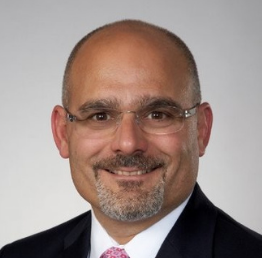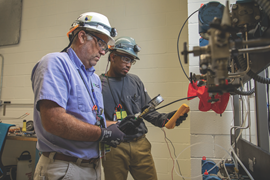How leadership can stimulate positive change
From the Top
Vol 31 No 1 2021
25 January 2021
Interview with Christopher Costanzo, Senior Vice President of Nuclear Operation at Entergy
 How do you describe your role in global nuclear performance and safety?
How do you describe your role in global nuclear performance and safety?
I personally as an executive and a leader have an incredible responsibility. I understand that the performance of the sites and fleets that we operate, and our ability to help other plants with regards to the credibility of this industry is extremely important. I think it’s a very challenging task certainly when performance is poor, as you maintain a recovery posture, but I also think it’s just as important when performance is great.
What techniques do you use to inspire and connect with people in your organisation?
Many leaders have gone into a new environment, and sometimes they’re extremely dissatisfied with the standards of that environment. You can go one of two ways in the road. You can get almost angry that they don’t have the same standards you have, or you can understand and recognise that it’s probably not the fault of the employees, because this was what they were allowed to do.
And so let that be an inspiration to you to be able to stimulate change. I’ve always employed the Educate Practice Evaluate (EPE) method - where you evaluate the standard that you’re going to try to change, you communicate it, you train it, and you practice in a non-threatening environment. You then make sure that you validated it so that staff truly understand that standard, and then you’re able to hold people accountable to the standard that you have delivered. It’s important to understand and address that - to inspire people, to be able to do something differently. I truly believe that we really don’t change people, but as leaders we help them become a better version of themselves.
 What traits do you look for in leaders of your organisation?
What traits do you look for in leaders of your organisation?
One of my favourite interview questions is: “give me the top three things that you believe you are not good at, that you’re working at”. And it’s pretty amazing, that people often respond in one of two ways. They’ll unload and divulge things that surprise you, or they’ll have an inability to be self-reflective, to understand and be able to articulate what their weaknesses are.
Because unless you know what they are and you’re willing to address them, and mitigate the consequences of maybe that lack of or gap in leadership, would you be able to close it? And the only way to determine that is from the self-revealing of it. So, it is really important to be self-critical, be open, understand and also appreciate diversity in the workforce, and be able to leverage that.
What advice do you have for current and future leaders in nuclear organisations around the globe?
As we turn over to a very capable generation, making the connection of nuclear safety and respect for the power and the consequences of what we do, is really important for future leaders, who are very capable and come from a very different place.
The second thing I’d say is dig into causes and contributors, ask yourself are there some gaps in my organisation and also ask are there some gaps in my own performance at times. But as we continue to ask “whys”, we shouldn’t be afraid to look in the mirror, to be able to understand the impact we’re having on an organisation. So I would say truly understanding gaps and being courageous enough to uncover the drivers - that might include your own leadership - is extremely important.